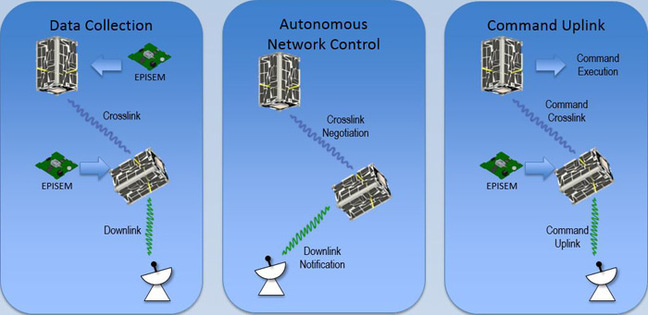This article is more than 1 year old
Smartmobes in spaaace: NASA deploys Android nanosats
Orbital testing for future networking swarms
NASA has deployed a couple of CubeSats using off-the-shelf smartphone tech which it hopes will "test out the potential for using a network of small, low-cost satellites to perform complex science missions".
The "Nodes" nanosatellites were ejected from the International Space Station on 16 May, along with a further three CubeSats. There's more on those, and how they were sent on their way using the NanoRacks CubeSat Deployer (NRCSD) system*, right here.
The space agency says of its smartphone-enabled twins: "Orbiting about 250 miles above Earth, Nodes will demonstrate the ability to receive and distribute commands in space from the ground, while periodically exchanging scientific data from their onboard radiation instruments, a first for small satellites.
"The satellites will be able to configure their data network autonomously by determining the best-suited of the two spacecraft to communicate with the ground each day of the mission. These demonstrations enable a path toward new network capabilities for operating swarms of small spacecraft in the future."
The radiation instruments in question are Montana State University's "Energetic Particle Integrating Space Environment Monitor" (EPISEM) units, "collecting data on the charged particle environment above Earth".
Comms are provided by "one S-band radio for ground communication, one ultra high frequency (UHF) radio for crosslink communication, and an additional UHF beacon radio that transmits state-of-health information", according to the mission outline (PDF).
The Commercial Off-The-Shelf (COTS) smartphone component builds on NASA's experience with PhoneSat, and is identical to the tech aboard the ill-fated** Edison Demonstration of Smallsat Networks (EDSN), albeit with "enhanced" software capabilities provided by "the Android operating system with specific software programmed to perform command and data handling tasks".
Roger Hunter, program manager for NASA's Small Spacecraft Technology Program (SSTP), which funds Nodes, said: "The technologies demonstrated during this mission are important, as they will show that a network of satellites can be controlled without communicating to each satellite directly.
"Nodes will demonstrate inter-satellite communications and autonomous command and control; this will help enable future constellation command and control capabilities."

Inter-satellite comms. Pic: NASA
The Nodes demonstration will last two weeks. Santa Clara University is in charge of the mission dashboard, and invites amateur radio operators to receive and submit data packets which will include "information from the satellite's science instruments as well as information on the status of spacecraft subsystems".
NASA elaborates: "When active, these transmissions will occur on the amateur radio frequency 437.1 MHz at intervals of either 30 or 60 seconds, depending on each satellite's mode of operation." ®
Bootnotes
*Here are the two Nodes CubeSats packed into a NanoRacks CubeSat Deployer with (at left) the St Thomas More Cathedral School STMSat-1. Note the impressive and somewhat ACME-inspired ejection spring:

Designed by Wile E. Coyote? Pic: NASA
**The EDSN's eight CubeSat cluster was destroyed in November last year due to the failure of the Super Strypi lifter, shortly after lift-off from the Pacific Missile Range Facility in Hawaii.
